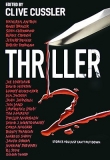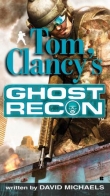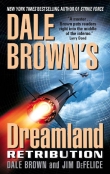
Текст книги "Ghost Fleet: A Novel of the Next World War"
Автор книги: P. Singer
Соавторы: August Cole
Жанр:
Триллеры
сообщить о нарушении
Текущая страница: 11 (всего у книги 37 страниц)
USS Zumwalt, Mare Island Naval Shipyard
From the water right now, Jamie Simmons thought the Zumwalt looked less like floating death and more like one of those ramshackle floating tidal towns off what used to be Indonesia, people weaving sheets of metal, plastic, and wood into improbable geometries to create homes.
What Vice Admiral Evangeline Murray thought of the Z, Simmons could not tell. She’d hardly spoken to him during her waterside tour of the ship. But her eyes didn’t stop moving. She was coming to understand the ship, Simmons felt, in a way he’d never bothered to. At one point, she had the launch brought up alongside the hull, and she put her hands on the ship like a healer and closed her eyes. What she heard or saw, he did not know. What he did know was that she had a status within the Navy that was unmatched. She’d been the first woman to command an aircraft carrier strike group before the war. More important, she’d been fortunate enough to be serving as president of the Naval War College when the shooting started, meaning she’d escaped both the Stonefish missiles and the congressional inquiries that had decimated the senior ranks.
She signaled for the launch to return to the pier.
“Captain, before we go aboard, I want to say that it is an honor to meet you,” she said. “We don’t have a lot of heroes in this country right now to inspire us. Your leadership and experience is invaluable and I just want you to know that if this ship does not work out, I will personally ensure that your talent is not wasted.”
“Thank you, Admiral,” said Simmons.
“In fact, they tell me we could use someone like you right now in Washington, perhaps more than out here,” said Admiral Murray. “You survived when nobody else did; that has a huge value to the war effort.”
Simmons did not blink; he kept his eyes locked on hers. Was she evaluating him too, not just the ship? This was one of those moments with a black-or-white outcome: Lindsey or the sea. Safety or duty.
“You’re right, ma’am. I don’t belong here,” said Simmons.
She nodded and furrowed her brow.
Simmons pointed toward the Golden Gate Bridge. “Admiral, this ship, or any ship we have, has to be out there at sea, where the fight is,” he said. “That’s where we belong.”
He said it instinctively, then paused to question whether he was voicing his father’s opinions or his own.
An elfin smile revealed the admiral’s yellowed teeth; unusual, because most people had had theirs whitened or replaced by her age. “That is for damn sure,” said Admiral Murray. “Now why don’t you introduce me to the crew.”
They didn’t pipe the admiral aboard, as she preferred not to disturb the work at hand.
“One thing that impresses me is all the camouflage here,” said Admiral Murray as they walked the deck.
“It might look like camouflage, but the reality is that all the scaffolding and tarps are really necessary. We ended up having to do a top-to-bottom overhaul here,” said Simmons.
As they approached a knot of crewmen – some in their teens, others decades older – clambering over a scaffold, the admiral said, “Tell me about the crew. How is the new mix going?”
“The mix of generations has its strengths and weaknesses. We have the remnants of the pre – Zero Day fleet. I was given my choice of the best of my old crew, which I understand I have you to thank for. Then there are the draftees, some of whom have never seen the real ocean, let alone been out on it,” said Simmons. “But what they do know are computers; they’ve been with viz in one form or another since birth. They see problems differently than regular sailors, even sailors who were in the Navy when the war started.”
Simmons pointed to a pair of teenagers with facial tattoos that were partially obscured by their brushed-titanium Apple glasses. The kids were having a conversation with one of the Mentor Crew.
“And then, Admiral, there are our most experienced sailors, the Mentors, many of whom joined the Navy before the First Gulf War,” said Simmons. “With the sense of history the younger sailors have, they might as well have been on Noah’s crew for all that means to them.”
“This is going to take some adjusting for all of us,” Admiral Murray observed, “and I don’t mean just those in the Navy. It’s the same everywhere now. People who wouldn’t have had a thing to do with each other a few months ago now have no choice but to join together, whether they’re growing food in a condo’s victory garden or working in the same shipyard. Bottom line, are the Mentors working out? We’ve had some conflicting reports from the other ships.”
“On the Zumwalt, they prefer to be called the Old Farts. I had my doubts, ma’am, but the older guys drive everyone hard. More important, they know the old tech and its secrets better than anyone else.”
Simmons led her farther astern.
“You can’t separate the people and the technology, really. But it’s not just about the old gear. What we’ve done in upgrading the ship’s wireless nets will help us run the ATHENA replacement but give us some more protection against network attack.”
“Local networking is going to be essential; focus on that,” she said.
“These are the vertical launch cells for the cruise missiles,” said Simmons, continuing the tour.
“Magazine capacity?” asked Admiral Murray.
“We’re at eighty now,” said Simmons. “But we have to reevaluate what that means while the Office of Naval Research is figuring out a new targeting system. Without GPS, they aren’t going to pack the punch we need. To have any kind of effect, we’d have to give up the magazine-allotment space for the air-defense missiles.”
Admiral Murray leaned forward. “We’ve been working on a GPS replacement for years, but it’s the same story – it just isn’t panning out,” she said. “It’s now or never, but if it’s not ready in time, then you’ve got the right approach. Make up for lost accuracy with volume of fire. Use the space for anything that has a strike capability. We need to bring as much fire as we can.”
They ducked beneath a tarp and stood before a slate-gray box with a honeycombed face. Known as the Metal Storm, it was a kind of electronic machine gun. But instead of dropping bullets in individual rounds to be fired out of a single barrel, one after another, here, bullets were stacked nose to tail inside the multiple barrels that honeycombed the device. Sparked by an electronic ignition, the rounds would fire off all at once, like a Roman candle.
“For close-in defense, we’ve rigged the Metal Storm as well as the pair of laser turrets just above the bridge,” said Simmons. “Directed energy should do for single targets, while the Metal Storm can throw up a literal wall of bullets, thirty-six thousand rounds fired in a single burst.” He patted the box softly. “Some of the kids have also been playing with the software to speed up reaction times.”
“Make sure you get that code to the fleet – we need to keep pushing the development,” she said.
“The question is how effective it will be, and then how much of the air-defense missiles we can unload,” Simmons said. “The simulation models give us a pretty wide mix of possible outcomes.”
“Perhaps I wasn’t clear,” said Admiral Murray. “I understand why you want to have both options when it comes to balancing this ship’s strike capability with its defense systems. But it’s a zero-sum game for what I need. I need Zumwalt to think of itself as a battleship if we’re going to use it.”
“Admiral, this is not a battleship, at least not in the old ways people thought of them,” said Simmons, consciously steadying his voice. She was testing him again. “A battleship counted on the sheer throw weight of what it could fire, but also on its own weight. Sixteen-inch guns, but also sixteen-inch armor plating. Big enough to hit hard, but also to be hit hard. We’re not that. Yes, the Z is the biggest surface combatant in the fleet, but it can’t take those kinds of hits. We have to punch first, and kill at a distance.”
“Exactly,” she replied. Test passed. “Then show me how you’re going to do that.”
They walked forward to where the ship’s original 155 mm gun turrets had been. In their place, workers were welding the fittings on what looked more like an angled tractor-trailer than the usual sleek gun mounting of a warship. Painted on the side was the program’s official motto: Speed Kills.
“This is the old prototype from the Dahlgren facility?” asked Admiral Murray.
“The very same. Some of the bits and pieces got lost after they shut down the program when the Z class got retired early, but it’s most of the original. Shipped over by rail from Virginia.”
“This is why you’re here, Captain. A working electromagnetic rail gun will be a game-changer for the fleet; maybe for the entire war,” she said.
The rail gun represented a break point, a shift away from over eight hundred years of ballistic science. Instead of using the chemistry of gunpowder to shoot a metal object out of a long barrel, the rail gun used energy that came from electromagnetic forces. A powerful current ran through two oppositely charged rails on either side of the barrel. When a conductive projectile was inserted between the rails (at the end connected to the power supply), it completed the circuit. Just as the gases expelled by exploding gunpowder propelled a bullet out of a conventional gun, the magnetic field inside the loop created a burst of incredible power, called a Lorentz force, that slung projectiles out of the open end of the gun barrel. There were no fuses to light, but the rail gun did require a massive and reliable supply of electrical current. Without electricity, a ship with a rail gun would be like a nineteenth-century ship of the line with a waterlogged powder magazine.
“We sure could’ve used it at Pearl,” he said, thinking of the popgun they’d had on the Coronado.
“I can imagine. But I don’t plan on anyone ever being stuck in a kill box like that again. What do you anticipate the rail gun’s effect will be on fleet action?” Another test. Still the college president at heart.
“It gives us speed and range, ma’am. It slings out a shell with a velocity of more than seven hundred feet per second, allowing us to strike targets out to a hundred and eighty miles. It’s a double gain. Faster than any missile and impossible to jam or shoot down.”
She nodded, but she seemed to be waiting for more.
“But more important will be their effect. The shells are small, but with that kind of speed they’ll hit with a force equaled only by the old Iowa-class battleships’ cannon shells, and those were the size of cars. It also solves the capacity and targeting problem we have with the long-range strike missiles. Even without a precise GPS location, we can lay down a pattern of fire that saturates a target set. That’s where the similarity with the old battleships holds best.”
“The Hand of God is what they called it during development,” said Admiral Murray. “I was a junior officer working on the Navy staff in the Pentagon back then, N-Nine Warfare Systems. I remember the rail-gun program; officers had it all over their PowerPoint briefs when they came in. It was a cool name, but it didn’t stop us from slashing their budget. How are you dealing with the thermal and power management issues that bugged it then? You can’t exactly replace a melted barrel in the middle of an engagement.”
“There’s two ways to deal with the heat. This is actually not the original barrel they had problems with back then. It uses a nanostructure that dissipates the heat. Of course, we still have to be careful, but we can fire in what we call a surge strike. The power management is more complicated, and, frankly, Admiral, that’s my concern. The rail gun requires the power equivalent of a small city. The ship was supposed to be designed with that in mind, but you know how they overpromised and underdelivered.”
No other surface ship besides the Zumwalt had a power system that could generate and, more important, store the tremendous amounts of electricity required for the electromagnetic push that was the essence of the rail gun’s design. This was why the Navy had lost its original excitement over the rail-gun program once the Zumwalt class had ended. Even with a design tailored for the new weapon, the Navy’s models projected that each firing of the rail gun would require stealing energy from other systems onboard, including the ship’s propulsion.
“We are all too aware of that problem with the old defense-industrial complex,” she said. “So what are you doing about it?”
“We’re approaching it through both tactics and reengineering,” said Simmons, trying to shift his tone so that she wouldn’t think he was making excuses. “Tactically, the plan is to use the power drain to our advantage, so to speak, by building drift into the anti-detection protocols. The key is not to get boxed in again, as you put it, but to disappear in the expanse of the ocean. On the reengineering side, we’re getting good results from the new energy-dense liquid-based battery being built for the ship. It’s giving us added power beyond what the original design in the nineties envisioned. We’ve been assigned a specialist in liquid-based batteries, a woman from the University of Wisconsin. Frankly, there’s a lot riding on her expertise.”
He paused to look directly at her.
“But the answer, Admiral, is that the rail gun is power hungry. My concern is that if things do not go according to plan, we will be stuck with only bad options.”
“Captain,” she said, stressing his rank. “That’s the thing you learn as you move from an executive-officer role to that of command. It’s never about choosing the best option; it’s about choosing the least bad of the bad options.”
She paused to let her lesson sink in. Simmons thought about that day at Pearl Harbor. She hadn’t needed to pass on that particular nugget of wisdom.
“Captain, I believe in you. And I believe in what this bastard child of a ship might accomplish. Risks that were once unacceptable to us are now the price of doing business.” Her eyes grew dark, and Simmons saw the warrior side come out of the old war-college president. “I need you to get this ship ready, because I need you to kill things out there, as many as you can, as fast as you can. I need the Directorate to feel something new: fear. You will make them feel that fear, Captain. Understood?”
Subbasement Level, G Ring, Pentagon
The door to the small conference room shut with a soft sigh and everyone in the room felt the pressure change. The naval officers there pinched their noses and exhaled to clear their ears, while the civilian scientists kept trying to swallow.
This secure space was a new design, built to defeat Directorate’s eavesdropping and network attack. The original Tank, the Joint Chiefs’ situation room, had been thought completely secure right up until the moment it was discovered that it had been compromised by hardware bought by a U.S. defense contractor on the cheap from a Florida subcontractor that turned out to be a shell company run by two college kids who were just reselling chips from a Chinese vendor. Everyone called these new chambers the Box, though the design was actually a box within a box. Between the two nanoparticle-infused sets of walls was a fluid that circulated at high speed in order to diffuse any signals or transmissions going in or out. Rumor had it the fluid was radioactive.
“Okay, then, let’s dispense with the formalities; none of us want to sit in the Box any longer than we have to,” said Admiral Raj Putnam, head of Naval Intelligence.
Links, sitting next to Darling, took his cue. “It starts in Beijing, sir. I was finishing up my assignment to the embassy – I was actually at my going-away party on my last night there. There was a Russian officer, a lifer in Beijing, whom I’d gotten to know, and he was helpful to me from time to time.”
“You mean you got shitfaced with him a few times and he was running you?” said Admiral Putnam.
“No, sir, I know the game,” said Links. “I’m not chipped, but you can check my viz and other records. That ties back to the party. As you know, everyone is either chipped or recording with derm mikes or viz or what have you. So I assumed there was no way he would say anything interesting.”
“Yes, I’ve reviewed the viz from the party myself,” said Admiral Putnam. “He didn’t.”
Links shot a look of disbelief at Darling. In the moment of silence, the womblike sound of the fluid pumping around the room seemed to intensify. Then Links cleared his throat and continued.
“It’s the context that makes our conversation interesting. As you saw, we were talking about Star Trek, the old television and film series. I’d talked about a lot of things with Sechin, but never science fiction. Usually he just gave me gossip on the Directorate’s internal politics or upcoming promotions, that kind of thing. So this stuck in my mind,” said Links. “Sechin explained how proud he was that one of the characters, Chekov, was named after this Russian scientist, Pavel Cherenkov. Honestly, Admiral, I figured he was just drunk. Then yesterday, after hearing about what happened to the USS John Warner, it clicked.”
Links wondered how old the admiral was. He wore his gray hair shaved to the skull, like most of the population of the Pentagon, some kind of show of commitment to the war effort. The admiral had smooth, unblemished skin but a nose like a moon rock. He might be old enough to have watched the first wave of Star Trek movies.
“So how does Mr. Links’s sci-fi drinking tales square with what you saw?” said Admiral Putnam to Darling.
“I believe it relates to how they targeted our undersea assets,” said Darling. “There were no Directorate submarines or surface ships in our area of operations other than the target we engaged. Nor were there any aircraft. We owned that box. Or so we thought.”
Darling chewed his bottom lip in evident frustration. “To answer your question, though, we need to give some context, which Dr. Shaw from NASA is best situated to provide.”
He turned to the man seated at his left. Shaw did not look the part of a scientist, being tall and wiry with a swimmer’s broad shoulders. He also wore an expensive suit, flashy, in the 1930s-style now back in fashion. And to cap it, he had his slender, rose-tinted viz glasses perched on his head, almost like a tiara. The intended effect, whatever it was, was lost on the admiral.
Shaw stood and began to speak as a projection appeared behind him. The content failed to match the vibe he gave off.
“When a photon exits a vacuum and enters a dielectric medium at a speed greater than the phase velocity of light, a wonderful result occurs, which proved to be key to science’s understanding of everything from the nature of black holes to the stars. Let us begin with the mathematical foundations.”
As Shaw scribbled out an equation that was projected on the wall of the Box, Admiral Putnam turned to the two officers and said, “Gentlemen, I don’t have time for a dissertation defense; we have a war to win. How does this link to Cherenkov and the subs?”
“He’s coming to it, sir,” Links responded. “Dr. Shaw, perhaps the metaphor you used to explain this to us might be more helpful now than the math.”
“Ah yes,” said Dr. Shaw. “You are familiar with what happens when an aircraft breaks the sound barrier by traveling faster than the speed of sound: A sonic boom trails behind it. Cherenkov radiation is that, in a sense, playing out at the electron level. What we know as light speed is possible only in a vacuum. When light travels through different mediums, such as water, it is slowed down by the matter in those mediums. Thus, it is possible for charged particles to travel faster than light through those surroundings. These particles, however, are still interacting with the same medium, exciting the molecules in it to release photons that pile up behind. Thus, the boom is a sort of cone traveling behind the subatomic particles. In nuclear reactors, which I understand you are interested in, the particles move away at higher speeds than light does, giving the wonderful blue glow you might be familiar with. That is Cherenkov radiation.”
Links jumped back in, knowing he was going to lose his audience if he didn’t intervene. “And, sir, that may be connected to another mystery. In the antisubmarine group, we’ve been focusing on the Directorate offensive at Pearl Harbor and then out at sea. But the attack, of course, began in space. And when you speak with our DIA colleagues about that, they’ll tell you that one target didn’t make sense, a particular NASA research satellite. We’d assumed that the Directorate had gotten their intel wrong and thought it was a clandestine spy satellite. That’s why Dr. Shaw is here. Doctor, could you tell the admiral what your project at NASA focused on?”
“It was originally designed to collect Cherenkov radiation for research into the origin of black holes. But because NASA wanted to show Congress ‘tangible results’ ” – Shaw put that phrase in air quotes, as if to show his disdain for applied research – “it was also used to study nuclear power plants and the real and potential dispersion of radiation after events like the Fukushima and Maine Yankee incidents.”
Darling cut in. “So, sir, I ran down the old Pentagon budget funding for R and D programs and found that back in the twentieth century, the Office of Naval Research did some studies that showed that tracking a reactor via the Cherenkov radiation it emitted was theoretically possible. But the subject was never really explored. It wasn’t just that the project had a low likelihood of success; it was that even if it worked, there wouldn’t be much of a payoff for us. Our entire sub fleet was nuclear, while the Russian and Chinese subs that were the most problematic for us were the quiet, diesel-driven ones. There were no incentives for investing in that kind of research. ONR assumed that no one other than us was advanced enough to do it, and strategists worried that if we made the effort, well, the research might get out, and we would just be doing the other side a favor.”
Links jumped back in. “We have to conclude that they made a breakthrough and discovered how to track the Cherenkov radiation, which allowed them to de-stealth and target our submarines, as well as anything else powered by a nuclear reactor. And that solves both mysteries, the attacks at sea and the targeting of Dr. Shaw’s satellite. Because if you and the other side both had that ability, you would want to make sure the other guys lost it, so you’d take it away from them, even if they hadn’t known they’d had it in the first place.”
The admiral didn’t respond for a full ten seconds. But his jaw clenched and a single bead of sweat formed at his temple. Then his words poured out in the quick cadence of someone who cannot quite believe what he is saying and so wants to get it out as fast as possible.
“This theory sounds like an improbable mix of drunken gossip and answers looking for questions. Which means it’s probably correct. And if it is, we have a very, very serious problem.”

![Книга [Magazine 1966-07] - The Ghost Riders Affair автора Harry Whittington](http://itexts.net/files/books/110/oblozhka-knigi-magazine-1966-07-the-ghost-riders-affair-199012.jpg)






